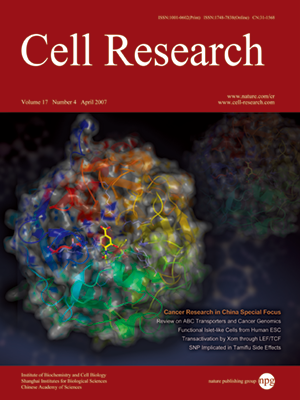
Volume 17, No 4, Apr 2007
ISSN: 1001-0602
EISSN: 1748-7838 2018
impact factor 17.848*
(Clarivate Analytics, 2019)
Volume 17 Issue 4, April 2007: 324-332
REVIEWS
Roles of CREB-binding protein (CBP)/p300 in respiratory epithelium tumorigenesis
Michalis V Karamouzis1, Panagiotis A Konstantinopoulos1,2 and Athanasios G Papavassiliou1
1Department of Biological Chemistry, Medical School, University of Athens, 75, M Asias Street, 11527 Athens, Greece;
2Division of Hematology-Oncology, Beth Israel Deaconess Medical Center, Harvard Medical School, Boston, MA 02215, USA
Correspondence: Athanasios G Papavassiliou(papavas@med.uoa.gr)
CREB-binding protein (CBP) and its homologue p300 are transcriptional co-activators of various sequence-specific transcription factors that are involved in a wide array of cellular activities, such as DNA repair, cell growth, differentiation and apoptosis. Several studies have suggested that CBP and p300 might be considered as tumour suppressors, with their prominent role being the cross-coupling of distinct gene expression patterns in response to various stimuli. They exert their actions mainly via acetylation of histones and other regulatory proteins (e.g. p53). A major paradox in CBP/p300 function is that they seem capable of contributing to various opposed cellular processes. Respiratory epithelium tumorigenesis represents a complex process of multi-step accumulations of a gamut of genetic and epigenetic aberrations. Transcription modulation through the alternate formation of activating and repressive complexes is the ultimate converging point of these derangements, and CBP/p300 represents key participants in this interplay. Thus, illumination of their molecular actions and interactions could reveal new potential targets for pharmacological interventions in respiratory epithelium carcinogenesis.
Cell Research (2007) 17: 324-332. doi: 10.1038/cr.2007.10; published online 20 March 2007
FULL TEXT | PDF
Browse 1933


